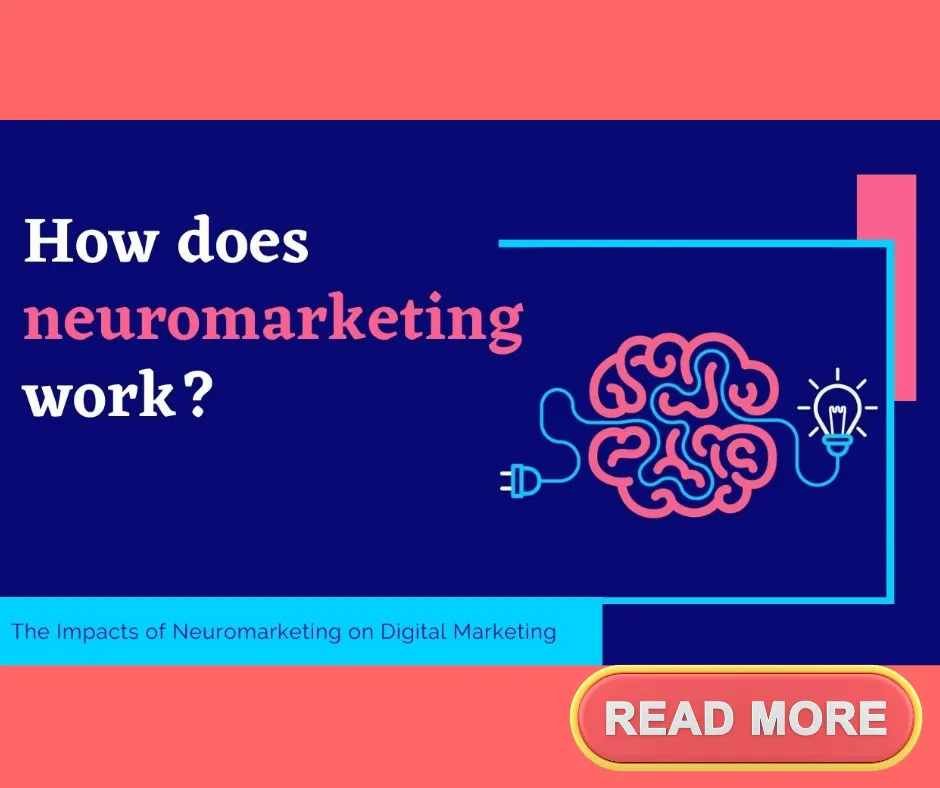Neuromarketing Marketing Strategy does it work in business
You may have heard the word “neuromarketing” used among advertisers and marketing teams recently.
What exactly is it? Is it just a buzzword or is it here to stay? If it is here to stay, what could it mean for business and what are the potential drawbacks and pitfalls?
Neuromarketing Basics
Put simply neuromarketing is where neuroscience and marketing come together. The approach has, in fact, been used by some marketing firms as far back as the early 1990s, but the technology was not so widely available or advanced as it is now.
The main impetus for most new business approaches has always been to sell more or to save costs. In the case of neuromarketing it is using the findings of neuroscience (how the brain and nervous system works) to unlock some of the secrets of buying behavior.
The age old marketing question of how and why people arrive at the decision to buy something has been an obsession of marketers through the years. So it should be little surprise that the advances of neuroscience – namely enhanced brain scanning and imaging technology – have started to be applied to one of the fundamental questions that occupies business minds.
In the pursuit of selling more products and services, marketing companies can use science to confirm or back up what they suspected before, or to uncover completely new information that can be used to shape future marketing campaigns.
Traditionally marketing research looks at the conscious mind, asking customers or potential customers about adverts and their purchasing experience in general. Although vital, this research limits insight in to what actually satisfies and makes purchasers tick. Neuromarketing researches more deeply than this, learning how to effectively market to the deeper levels of our mind that motivate real decision making. Why is this so commonly overlooked? In marketing effectiveness is king and there is nothing sinister about that if your product or service adds positive value. Marketing needs every chance it can to connect with the people you can satisfy.
Neuromarketing comes in to its own by creating a fundamental connection with your audience and consumer base.The research does this by testing with EEGs and fMRIs while they are engaged with marketing and services and products.
Through this type of testing scientists and neuromarketers are able to identify what areas of the brain have been stimulated from priming, engagement, emotion and through to decision taking. This level of science can ascertain what is going on in the mind as people are moved through the product or communication experience.
So much of our mind operates below our awareness and although there is much fear mongering about, this is not necessarily something to be looked at negatively.
Imagine if it didn’t. What a burden it would be to have to think about every breath you take or had to remember how to write every time you picked up a pen.It is truly a gift that we can run on autopilot. As a result of our auto-piloting skills we also experience irrational reactions to things because during our evolution they posed significant threats to us.
Strategic neuromarketing incorporates neuroscientific knowledge in to business strategy and marketing. It ensures marketing appeals directly to the behaviour that operates below our awareness as well as the conscious mind. Both parts of ourselves need to be in coherence if motivation is to transcend in to action.
Big headlines may grab the attention but in particular environments may be less effective than an attractive face with dilated pupils staring back at you. Language, and therefore words, operate in the mind as an abstract representation whilst vision is a more direct communication in the brain requiring less translating.
Our human brains are hardwired as the social animals we are and recognise faces instantly and clearly, A memory is only as good as its initial imprint and so the clarity is a key component of effective marketing.Dilated pupils and an attractive face engages the brains mirror neuron system (mns) and our sexual attention, because this is how our brains have evolved.
Types of Neuromarketing Studies
Studies are usually based around the participants wearing EEG equipment – that’s essentially a plastic swimming cap with electrodes in it to measure brain signals.
In another type of study, participants undergo functional magnetic resonance imaging (fMRI) which measures brain activity by the changes in blood flow around it.
Thirdly, eye-tracking technology might be used to indicate what is getting the attention of participants.
What’s it Being Used for?
A typical example of applying neuromarketing would be in a retail environment such as a supermarket. Whether shoppers make lists and decide on what they are going to buy beforehand or whether they decide in-store would be valuable information for marketers. Previously they would have relied largely on surveying.
Now it’s possible to use eye-tracking and EEG technology to investigate the habits of shoppers. One such study in the US recently hooked eye-tracking glasses up to volunteer shoppers, with MacBooks recording the data as they wandered through the store.
The study found that over three-quarters of shoppers decide in-store and that those using non-cash payment methods were most likely to buy on impulse. You could see how this would affect the placement of goods around the store, for instance.
But it doesn’t stop there.
Neuromarketing has been used to assess the success of ads for instance, especially during high profile advertising times like the Superbowl Final. The brain’s engagement to a certain ad can be measured.
Nearly all the “big players” in the world of advertising, from the movie industry to soft drink manufacturers, are getting excited by neuromarketing -and applications are expanding throughout the business world. Specific neuromarketing studies don’t come cheap, but some of the more general findings will be of interest to many businesses looking to hone their marketing approach.
Marketing giant Nielsen clearly thinks neuromarketing is here to stay – it purchased NeuroFocus in 2011; Innerscope and others also seem to be pushing for a widespread adoption of the approach.
The Ethical and Legal Challenges
It’s all very well for store managers to be rubbing their hands with glee at having got “inside” their customers’ brains, but it is an extremely complex subject that should not lead to simplistic findings and conclusions.
Quite apart from that, where do we stand from an ethical and legal point of view with neuromarketing?
The lawyers Covington & Burling recently published a white paper stating that there is “concern among government regulators and consumer advocates” that studies of subsconsious reactions to different ads and using the conclusions to sell more products may lead to “new forms of consumer deception and erode privacy rights.”
This concern is being voiced on both sides of the Atlantic, with particular focus on the potential to mislead and “trick” customers into buying products that they don’t need, especially children and the elderly.
One suggestion is that a code of ethics is introduced for neuromarketing, restricting marketing to kids and other vulnerable groups.
The team at NeuroPower is at the forefront of introducing new approaches to organisational development through the findings of neuroscience. We apply them to all types of businesses, developing high performing teams and enhancing leadership.
[affiliate_video_pro id=”vi15ce3ce54040ad”]







